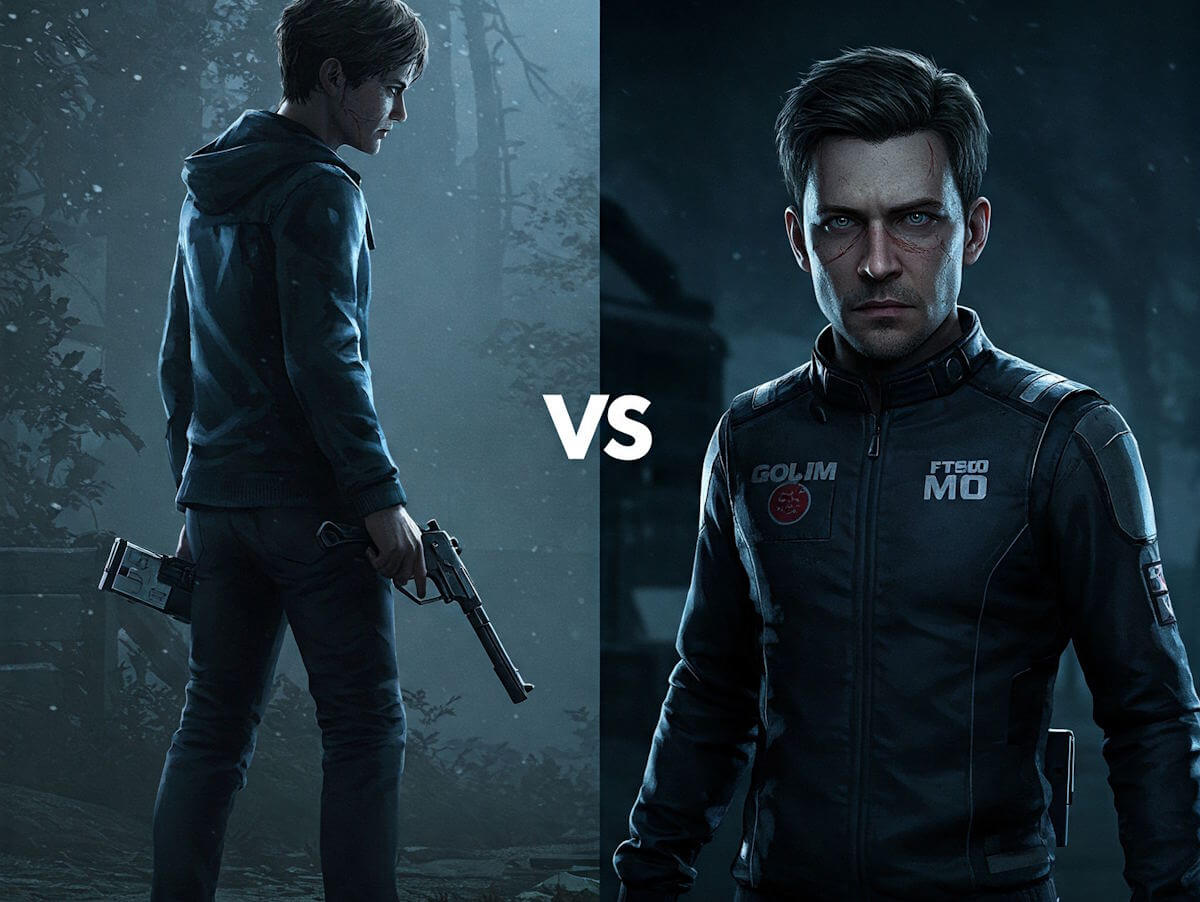Founded in 1995 and headquartered in Espoo, Finland, Remedy Entertainment has carved a niche in the gaming industry as a developer renowned for its emphasis on narrative-driven experiences. The studio gained fame with its debut title, Max Payne, released in 2001, which introduced players to a gritty, noir-inspired world enhanced by a compelling narrative and innovative gameplay mechanics. This combination of storytelling and game design has established Remedy as a formidable force in the realm of video game development.
Remedy’s commitment to complex storytelling is evident in its subsequent titles, including Alan Wake and Quantum Break, where the narrative often takes center stage, playing a pivotal role in the gaming experience. These games showcase the studio’s philosophy that a robust storyline can elevate gameplay, allowing players to engage more intimately with the game world. In addition to intricate plots, Remedy employs unique gameplay mechanisms, such as the use of light and shadow in Alan Wake, which serve to reinforce thematic elements and enhance player immersion.
Throughout its history, Remedy has distinguished itself by developing games that challenge conventional narrative forms in video games. The studio has often integrated cinematic elements, resembling a film-like quality, into its storytelling. This innovative approach not only broadens the scope of gameplay but also deepens emotional connections with characters and their journeys. As technological advancements continue to shape the gaming landscape, Remedy remains committed to evolving its storytelling methodologies while maintaining a focus on delivering rich narratives that captivate players worldwide.
Background of Alan Wake and Control
Remedy Entertainment has established itself as a notable developer within the gaming industry, widely recognized for its unique storytelling techniques and immersive gameplay experiences. The studio first gained significant attention with the release of Alan Wake in May 2010. This psychological horror game follows the narrative of a troubled author named Alan Wake, who finds himself grappling with mysterious forces in the fictional town of Bright Falls. The game was well-received, praised for its compelling narrative structure and atmospheric environments. Critics lauded its cinematic quality and character development, which drew players into a world filled with suspense and danger. Alan Wake not only set a benchmark in psychological horror gaming but also showcased Remedy’s ability to weave multifaceted story arcs that resonate with players.
In contrast, Remedy’s Control was released in August 2019, expanding the studio’s narrative repertoire into the realm of supernatural and science fiction. Control introduces players to the Federal Bureau of Control, a secretive government agency fighting off supernatural phenomena. With a protagonist named Jesse Faden, players are thrust into a world laden with telekinetic abilities and surreal environments. The game’s reception mirrored that of Alan Wake, receiving acclaim for its innovative gameplay mechanics and rich lore. Control is frequently highlighted for its depth in world-building and the intertwining narratives that challenge players’ perceptions of reality.
Both titles exhibit Remedy’s trademark narrative-driven design, yet they delve into distinctly different themes. While Alan Wake explores the fragility of the human mind and the horrors of creativity, Control tackles concepts of power, government conspiracies, and the supernatural. Together, they carve out a unique niche in Remedy’s portfolio, illustrating the studio’s evolution in storytelling and pushing the boundaries of the gaming experience.
Narrative Structure: Alan Wake 2
Alan Wake 2 employs a distinctive narrative structure that echoes the episodic format of a television series, creating a unique way to engage players and build suspense. This approach allows for a segmented storytelling method, where each chapter unfolds like an episode, introducing cliffhangers and pivotal plot twists that keep players invested in the story. By crafting its narrative in this way, the game not only develops an intrinsic rhythm but also enhances the emotional experience, as players feel compelled to continue their journey to uncover the truth behind the haunting events.
Character development is intricately woven into this episodic format, allowing for a deeper exploration of the protagonists’ psyches. Alan Wake, returning as the titular character, is depicted grappling with his own fears and the consequences of his literary creations. The narrative showcases his struggle against a malevolent force that blurs the line between reality and fiction. This interplay of light and darkness serves as a central theme throughout the game, resonating on multiple levels. The metaphor of light as a weapon against darkness symbolizes hope and clarity, while also reflecting the psychological battles the characters endure.
Furthermore, the episodic nature enables the gradual unveiling of central themes related to identity, creativity, and the impact of trauma. As players progress, they are invited to delve deeper into Alan’s psyche and confront the ramifications of his actions. The narrative thrives on a psychological foundation as it explores how fear manifests in different forms, intensifying the player’s experience. Engaging with the themes not only enriches the gameplay but also cultivates an atmosphere of suspense, ultimately ensuring that the story lingers long after the game is completed.
Narrative Structure of Control
‘Control’ presents a distinctive narrative structure that deviates from traditional linear storytelling, immersing players in a complex tale woven with psychological themes and supernatural phenomena. At the heart of the game’s narrative is the Federal Bureau of Control (FBC), a shadowy government agency tasked with managing paranormal occurrences. This setting is crucial, as it not only serves as the primary locale for the unfolding events but also enhances the mystery and intrigue that characterize the storyline. The FBC itself is laden with secrets, each corner of its enigmatic headquarters, the Oldest House, reflecting a fragmented narrative that parallels the player’s journey.
The game employs a non-linear storytelling approach, allowing players to engage with the plot in a multitude of ways. As players traverse the Oldest House, they encounter various missions and side quests that contribute to the overarching narrative without adhering to a strict chronological order. This structure encourages exploration and discovery, inviting players to piece together the story from different vantage points. The narrative unfolds organically through interactions with the environment, NPCs, and, significantly, through a series of collected documents that players can discover throughout the game.
These documents range from memos to case files, creating a rich tapestry of information that not only expands the lore of the FBC but also provides context to Jesse Faden’s personal quest. Jesse, the protagonist, is on a mission to find her missing brother, a focus that intertwines with the larger supernatural elements at play. This interplay between Jesse’s personal narrative and the bizarre occurrences surrounding her serves to heighten the tension and stakes of the game, making her journey deeply emotional while simultaneously multifaceted. Through its innovative narrative structure, ‘Control’ captivates players, offering a unique blend of personal stakes and supernatural intrigue that leaves a lasting impact.
Themes and Motifs in Alan Wake 2
In ‘Alan Wake 2’, a rich tapestry of themes and motifs serves as the backbone of its storytelling, inviting players to immerse themselves in a narrative that explores complex concepts. One prominent theme is the nature of creativity, which is intricately tied to the protagonist’s journey. As Alan navigates through a world influenced by his own written words, the game raises questions about the power of storytelling and the responsibility that comes with creation. This exploration of creativity is not solely an intellectual exercise; rather, it manifests in the gameplay mechanics where players interact with the narrative itself.
Another significant motif within ‘Alan Wake 2’ is the battle against inner demons. Alan’s struggles extend beyond physical adversaries; they delve deep into his psyche as he faces manifestations of his fears, guilt, and regrets. This internal conflict enhances the psychological horror elements of the game, allowing players to witness the impact of Alan’s past decisions on his current reality. Through various gameplay dynamics, such as flashbacks and surreal environments, the game encourages players to reflect on the nature of personal turmoil and the necessity of confronting one’s own darkness.
Moreover, the blurred lines between reality and fiction permeate the narrative, challenging players to decipher what is real in Alan’s world. This motif not only amplifies the suspense but also enriches the overall storytelling experience. The environment frequently shifts between recognizably mundane settings and unexplainable, nightmarish landscapes that echo Alan’s fractured state of mind. This interplay invites players to question their own perceptions and understandings of reality, creating a deeply engaging psychological experience. Overall, the themes and motifs in ‘Alan Wake 2’ significantly contribute to the emotional and psychological engagement of the player, offering a profound exploration of creativity, inner conflict, and the nature of reality.
Themes and Motifs in Control
Remedy Entertainment’s ‘Control’ is a masterclass in narrative complexity, driven by various themes and motifs that resonate deeply with players. One of the most prominent themes is the investigation of the unknown. The Federal Bureau of Control (FBC) is shrouded in mystery, exploring the supernatural and the bizarre. As players navigate through the shifting environments of the Oldest House, they engage in a constant pursuit of understanding phenomena that defy explanation. This investigation is not merely about uncovering secrets; it invites players to confront their fears and challenges the limits of human comprehension, thus making the exploration of the unknown a central aspect of the player’s journey.
Another vital theme in ‘Control’ is the struggle for power. The game deftly illustrates the dynamics of control exerted by both the FBC and the entities that inhabit the Oldest House. Characters in the game grapple with their personal quests for power, whether it is Jesse’s need to find answers about her past or the bureaucratic battles within the FBC itself. This struggle emphasizes the ways in which power can corrupt and the unforeseen consequences that arise from its pursuit. Through these character arcs, players are encouraged to reflect on the nature of authority and the impact of ambition on individual lives.
Bureaucracy is another significant motif in ‘Control.’ The game’s setting—a sprawling government agency marked by red tape and procedural regulation—highlights how bureaucratic systems can entrap individuals, leading to a disempowerment that contrasts sharply with the supernatural forces they encounter. The game expertly critiques how institutional inertia can stifle creativity and hinder progress, echoing real-world concerns about the effective functioning of organizations. By melding these themes—investigation, power, and bureaucracy—’Control’ crafts a narrative rich with multiple layers, encouraging players to engage in a thoughtful dialogue about the deeper issues at play in both the game and contemporary society.
Character Development in Alan Wake 2
In “Alan Wake 2,” the intricate character development serves as a cornerstone of the narrative, significantly enhancing the overall storytelling experience. The protagonist, Alan Wake, returns with a deeper complexity, grappling with his identity and the turbulent events that transpired in the original title. His psychological state acts as both a driving force and a central theme, with the dimensions of his character evolving throughout the game. This transformation is not merely superficial; it reflects the intense internal struggles and external pressures he faces as he unravels the mysteries surrounding his existence.
The supporting cast is equally noteworthy, with each character carefully crafted to intertwine their personal arcs with Alan’s journey. Take, for example, the presence of new allies and antagonists who challenge Alan’s beliefs and motivations. Their interactions with him not only provide moments of tension but also pave the way for profound character revelations. These relationships illuminate various facets of Alan’s psyche and serve to anchor his character’s evolution against a backdrop of psychological horror and thrilling narrative twists.
Moreover, the game effectively employs storytelling techniques that emphasize character relationships, such as dialogue choices and flashbacks that deepen emotional connections. As Alan’s story unfolds, players witness how trauma, loss, and the quest for redemption shape not only him but also those around him. The character arcs, laden with conflict and discovery, contribute significantly to the thematic depth of “Alan Wake 2,” as they explore concepts of fear, creativity, and the blurred lines between reality and fiction. Overall, the character development within the game is pivotal, not only driving the narrative forward but also inviting players to reflect on the intricacies of human emotion and resilience.
Character Development in Control
Character development plays a crucial role in the storytelling of Remedy Entertainment’s Control. The protagonist, Jesse Faden, embarks on a significant journey that is marked by profound changes in her character, motivations, and relationships. Initially, Jesse is portrayed as a troubled individual seeking answers about her past and the mysterious disappearance of her brother, Dylan. This personal quest drives her to the Federal Bureau of Control (FBC) where she becomes the Bureau’s new Director, thrust into a world filled with supernatural phenomena. Her quest for truth serves as a powerful motivator, allowing players to witness her evolution from an uncertain young woman into a formidable leader.
Jesse’s relationships with the supporting characters enrich her narrative arc and enhance the game’s world-building. Characters such as Emil Hartman and Dr. Casper Darling not only influence her growth but also provide insights into the enigmatic environment of the FBC. Emil’s manipulative nature serves as a foil to Jesse’s determination, showcasing the challenges she must navigate. Dr. Darling, on the other hand, offers her guidance while also embodying the complexities of the Bureau’s secrets. The interactions between these characters and Jesse highlight her resilience and adaptability as she confronts external threats and internal struggles.
The intertwining backstories of supporting characters create a multifaceted narrative that deepens the player’s engagement. For instance, the hardships that other Bureau personnel experience serve as reflections of Jesse’s own conflicts, reinforcing themes of trauma, identity, and the search for belonging. As players delve into the lore through collectibles and environmental storytelling, they gain a more profound understanding of the dynamics at play in Jesse’s life and the world around her. Overall, Control masterfully constructs character development, blending individual journeys with the overarching narrative to create an immersive experience that resonates with players.
Conclusion: Remedy’s Mastery of Storytelling
Remedy Entertainment has consistently demonstrated an exceptional ability to weave intricate narratives that resonate deeply with players. Both ‘Alan Wake 2’ and ‘Control’ serve as prime examples of the studio’s mastery in storytelling, showcasing unique approaches while maintaining a cohesive design philosophy that emphasizes emotional engagement and immersive atmosphere. The comparison of these two titles highlights the depth and complexity that can be achieved in video game narratives.
In ‘Alan Wake 2,’ the use of a metafictional narrative, rife with psychological themes, engages players in a thrilling mystery that blends reality and fiction. The game’s characters are multifaceted and relatable, allowing players to form strong emotional connections. The atmospheric environments further enhance the tense storytelling, drawing players into the world with expertly crafted dialogue and visual storytelling techniques. This artful balance of narrative elements exemplifies why Remedy is renowned for its storytelling capabilities.
Conversely, ‘Control’ presents a distinct narrative style, interlacing themes of the supernatural with the complexities of bureaucracy. The game excels in creating an immersive world that feels both alien and familiar, encouraging exploration and curiosity. The nonlinear storytelling allows players to piece together the narrative at their own pace, fostering a sense of discovery. Remedy’s ability to incorporate environmental storytelling and lore into ‘Control’ results in a layered narrative experience that resonates powerfully with players.
Ultimately, the storytelling prowess displayed in both ‘Alan Wake 2’ and ‘Control’ positions Remedy Entertainment as a pioneer in the industry. Their commitment to crafting engaging narratives not only elevates the gameplay experience but also solidifies their reputation for creating memorable stories that linger long after the game has concluded. As Remedy continues to evolve, players can anticipate even more innovative storytelling approaches that captivate and inspire.




